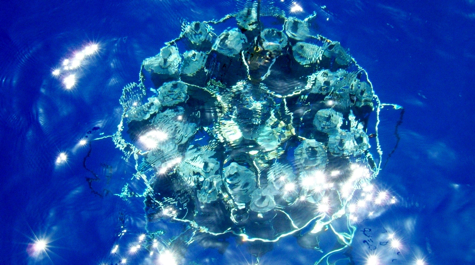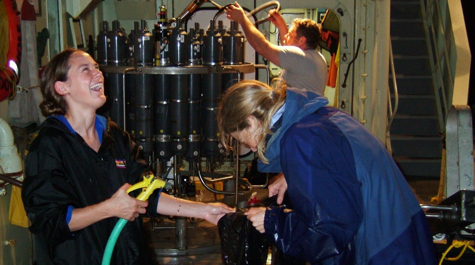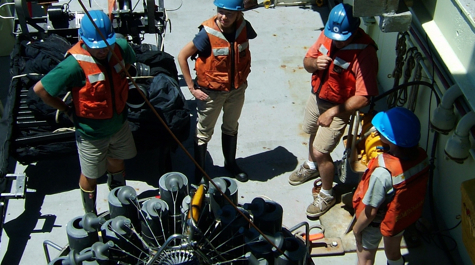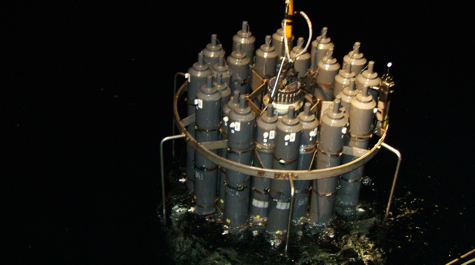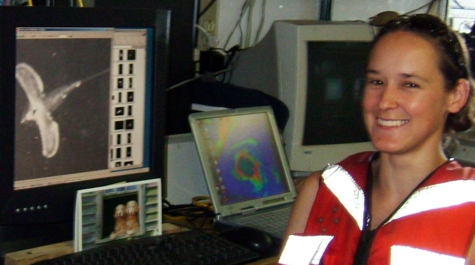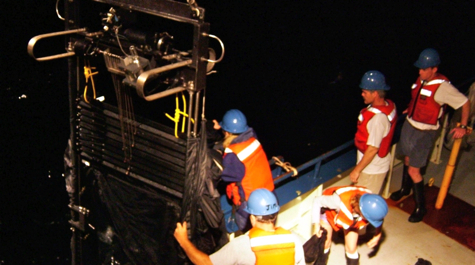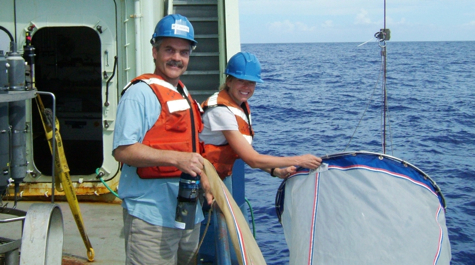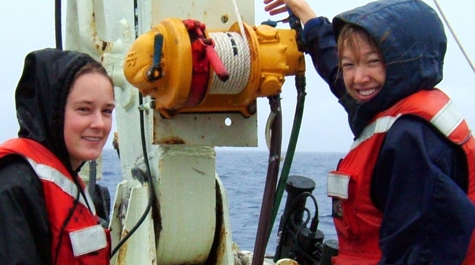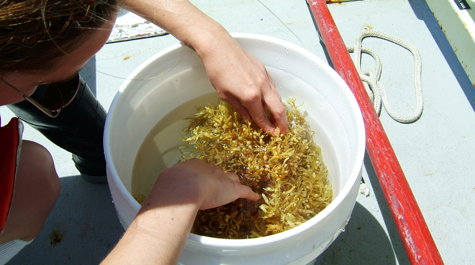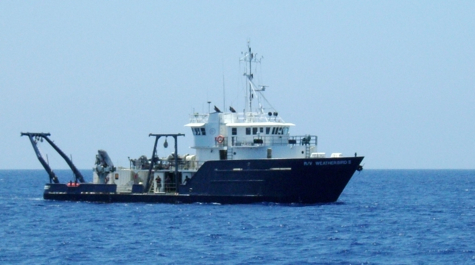EDDIES
Impacts of Eddies on Zooplankton Community Structure and Biogeochemical Cycling in the Open Ocean
This study investigates zooplankton in mesoscale eddies, ubiquitous but undersampled ocean features. Our project is a component of a larger, interdisciplinary study known as "Eddy Dynamics, mIxing, Export, and Species composition" (EDDIES), which strives to assess eddy-driven changes in nutrient availability, food-web structure, and particulate flux. Eddies are temporally and spatially dynamic features that may actually account for a significant percentage of global oceanic primary production, particularly in open-ocean gyres.
Physical factors ultimately determine the course of biological events in the ocean because processes such as mixing, advection, turbulence, and diffusion profoundly affect the distribution, production, and behavior of pelagic organisms. The influence of physics on biology operates on many scales, from ocean-basin circulation to turbulence affecting single cells. The currents, fronts, and eddies that comprise the oceanic mesoscale, sometimes referred to as the internal weather of the sea, are highly energetic features of ocean circulation. However, there are surprisingly few data on how eddies affect the structure of marine zooplankton communities. Such information is important as the size distribution of pelagic producers (phytoplankton) and the trophic position of pelagic consumers (zooplankton and micronekton) determines the fate of primary production, the composition and sedimentation rate of sinking particles, and plays a crucial role in nutrient cycling.
We are involved in a series of cruises in the Sargasso Sea, south of the island of Bermuda, to compare zooplankton biomass, species composition, diel vertical migration behavior, body condition, and contribution to vertical flux inside versus outside eddy features. Our goal is to advance understanding of the complex interactions between physics and biology in eddies and to elucidate the role that mesoscale features play in structuring zooplankton communities and influencing biogeochemical cycling. Our measurements will be made simultaneously with an extensive suite of other physical, chemical, and biological measurements. Ultimately, this natural perturbation experiment could provide critical information about how the ocean has responded to environmental changes in the past, and how it might do so in the future.
Collaborators
This project is a collaboration between the:
- Virginia Institute of Marine Science
- Woods Hole Oceanographic Institute
- Rutgers University
- University of California-Santa Barbara
- University of Miami
- Bermuda Institute of Ocean Science.
Funding
Funding for this project is jointly provided by the National Science Foundation (NSF) Biological, Chemical, and Physical Oceanography programs.


